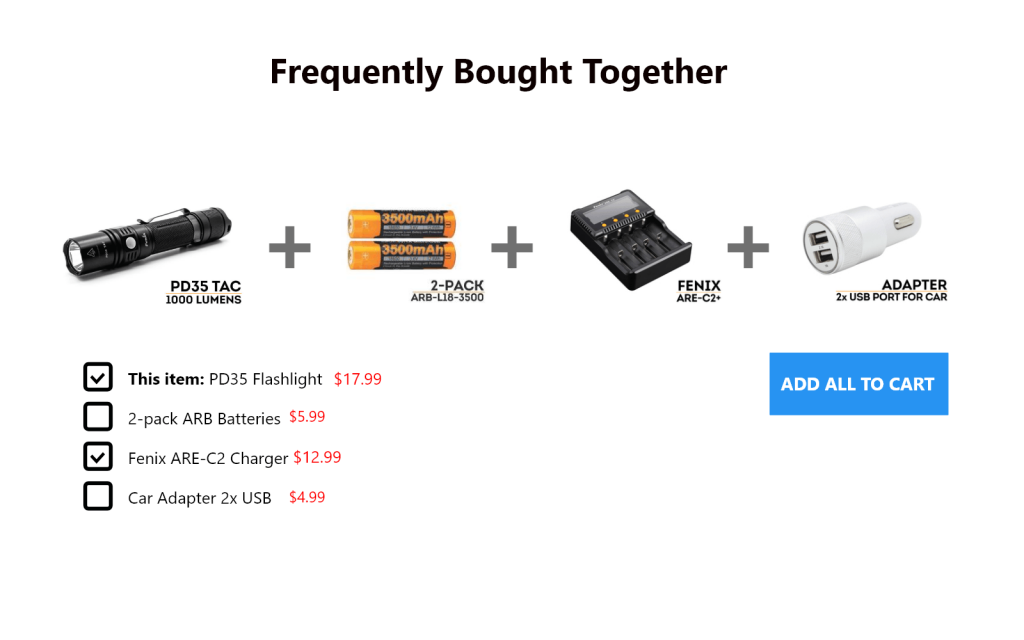A basic guide to Nudge Marketing
Nudging is a form of psychology that uses small imperceptible changes to nudge you into a change of behavior. In short, it’s a way of manipulating people to achieve a desired outcome. Nudge Marketing, on the other hand, is the art of helping customers make better decisions without complicating their thought process.
The use of nudges is so wide-spread already that you have most likely already been nudged a few times today. As scientists and psychologists better understand our behaviour and how to modify or influence it, nudging will continue to be a widely-used and sought-after skill.
The term Nudge was originally coined by Law scholar Cass Sunstein and behavioural economist Richard Thaler. They wrote about their findings in a book called Nudge: Improving Decisions about Health, Wealth, and Happiness. Since then, Thaler has won a Nobel Prize in Economics.
Nudge examples



The psychology behind nudges
As you can see in the above images, the nudges used were simple and intuitive. We didn’t have to calculate anything or really even take time to think about what needs to be done in order to change our behavior. We were prompted to change based on what was presented in front of us, and our brains intuitively followed the cue(s).
As Sille Krukow puts it, we are biologically coded to save as much energy as possible when making decisions. This means that we avoid trying to make hard decisions when it’s not necessary; hence the effectiveness of nudges.
Professor Rick Larrick from Duke University has come up with the acronym C.O.R.E to help you identify how your nudge should be structured.
- Do Calculations for people and don’t assume that they can do it themselves
- Translate information into personal Objectives. In other words, don’t use jargon or obscure terminology that no one cares about. You need to use the things THEY care about. For example, if you’re selling shoes, don’t speak about the amazing foam used in the shoe, rather speak about how it will ease joint pain.
- Provide Relative comparisons. Make hard to understand numbers easier to understand with comparisons.
- Expand important outcomes. Allow numbers or cues to show the benefit over the course of a month or a year, rather than just in the moment.
Nudge Marketing Tactics
Apart from using your new secret power to change the world for the better, you can use these tactics to improve conversion rates and sales on your website. Using subtle nudges in your website copy, design, or product can have a massive impact on your bottom line.
Social Proof

Use social proof to create a sense of FOMO. When potential customers see other potential customers enjoying the product, or solving their pain point, they will be quick to jump on board.
Directional Cues

Like with the lanes painted at Dead Man’s Bend in the image above, using directional cues on your website or landing pages help guide users to where their eyes should go, and what action should be taken next.
Authority
Identifying your product or brand as an authority is a critical nudge towards increasing trust. To do this, you need to showcase how your product or brand compares against others in a quick and easy to understand manner.
Popularity metrics

Calendly does this really well. When browsing their site, you will notice a huge, clean banner that instantly tells you they have 5 million monthly users.
Scarcity

When the customer knows that there are only one or two items left in stock, they’ll land up hitting the “add to cart” button quicker and more decisively than a visitor who was unaware of the low stock issue. Keep in mind, however, that this may also have an adverse effect if the user is looking for more stock than you have.
Checkout upsells

Upselling products just before a user finalizes their checkout is a great way to increase sales. It is important however that you only display related products or high selling items that the user has not yet considered.
Frequently bought together

Giving potential customers a nudge to buy items that have been previously bought together with the product they are interested in is an amazing way of not only adding value to the user, but also increasing sales.
Remarketing

Sometimes visitors to your website get distracted by things outside of your control – Their phone may ring and they land up forgetting about making that purchase or signing up to your SaaS product. This coupled with the fact that most people have between 5 and 40 browser tabs open at any point, means that their intention to purchase your product may get lost at some point. Remarketing is a great way to remind them about their initial intentions.
Decoy effect

The decoy effect is a subtle nudge that changes the preference of a consumer between two options when presented with a third. While not intending to be sold, the decoy is priced to make one of the other options much more attractive. I’m not a fan of this tactic as it is deceptive. Nudges are meant to be used in a way that adds value to the user while increasing your revenue.
If you can think of any other great simple nudges that one can use on their website, let me know in the comments below!